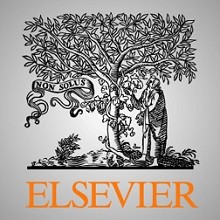
یک تحلیل متاآناليز در مورد مدل پنج عاملي شخصيت (FFM)
Abstract
1- Introduction
2- Method
3- Results
4- Discussion
References
Abstract
Objective: The aim of the present meta-analysis was to examine the relationship between the Big Five personality traits and emotion regulation strategies. Method: Studies were identified in PsycArticles, Medline, and Eric databases. Only empirical studies were included. Results: Out of 32,656 identified articles, 132 studies (156 independent samples, 46,345 participants, and 753 effect sizes) met the inclusion criteria. The effect sizes of the r-type were obtained from all studies. The data were analyzed with random effects model. Lower level of neuroticism and higher levels of extraversion, openness to experience, agreeableness, and conscientiousness were associated with greater typically adaptive emotion regulation strategies (reappraisal, problem solving and mindfulness) and lower typically maladaptive emotion regulation strategies (avoidance and suppression). Additionally, in a few cases, the associations were stronger in clinical samples than in nonclinical samples, in females than males, and in samples reporting dispositional emotion regulation compared to samples reporting situational emotion regulation. Conclusion: These results were discussed in terms of their importance for possible intervention strategies.
Introduction
In this article, I seek to address the relationships between the Big Five personality traits and emotion regulation strategies. Until now, no study has meta-analytically evaluated the associations between the Five Factor Model of Personality and emotion regulation strategies. However, previous studies on the relations between personality traits and coping suggest that the Big Five and emotion regulation may be interrelated. Perhaps the most prominent evidence comes from ConnorSmith and Flachsbart (2007) who meta-analytically tested the relations between the Five Factor Model of Personality and coping using 2653 effect sizes drawn from 165 samples and 33,094 participants. In their study, all the Big Five personality traits were linked with coping. Neuroticism, extraversion, and conscientiousness showed the strongest association with coping. Generally, neuroticism was linked with problematic strategies like wishful thinking, withdrawal, and emotion-focused coping, extraversion was related to support seeking and together with conscientiousness also with problem-solving and cognitive restructuring. Extending the knowledge of the relationship between personality traits and emotion regulation strategies is important because it allows us to better understand which personality traits are associated with adaptive and maladaptive emotion regulation strategies and how other factors modify these relations. Whereas, some studies even suggest that all the Big Five personality traits are linked with emotion regulation strategies (Balzarotti, John, & Gross, 2010), others do not confirm these results (comp. Egloff, Schmukle, Burns, & Schwerdtfeger, 2006). These discrepancies suggest that a few questions still need to be addressed. First, the strength and direction of the association between personality traits and emotion regulation strategies is still unclear. Second, it needs to be verified which personality traits are predominantly linked with typically adaptive emotion regulation strategies and which are particularly associated with typically maladaptive emotion regulation strategies. Third, the potential moderating effects of other factors should be evaluated.
